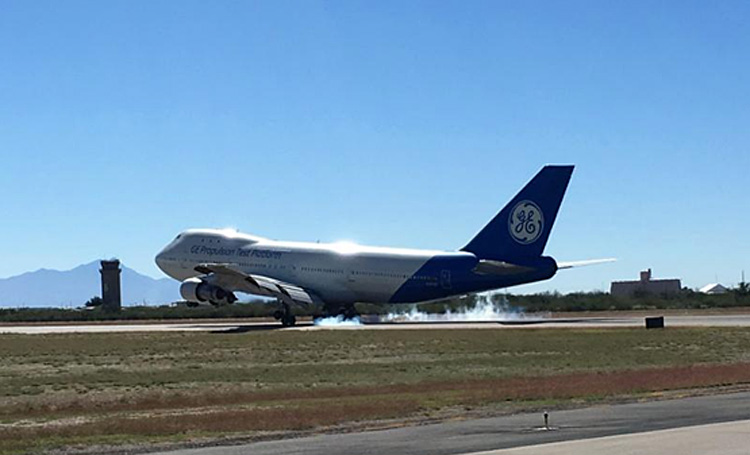- Prime Minister Narendra Modi inaugurates Aero India 2023 in Bengaluru; Releases Commemorative Stamp
- Defence Secretary meets delegations from Saudi Arabia, USA and Oman on the sidelines of Aero India 2023
- Foreign Ministers of 32 countries to attend Aero India 2023
- Embraer showcases the C-390 Millennium at Aero India 2023
GE's Original Flying Testbed touches down at its new home at the Pima Air & Space Museum
• GE Aviation is donating its original Boeing 747 Flying Testbed to the Pima Air & Space Museum in Tucson, Arizona
• The B747 Flying Testbed was the oldest 747 in active service with 21 years of passenger service with Pan American World Airlines and 24 years of testing aircraft engines with GE

GE Aviation's original Boeing 747 Flying Testbed aircraft made its final flight today from the Flight Test Operation in Victorville, California to the Pima Air & Space Museum in Tucson, Arizona. The donated aircraft will join more than 350 historical aircraft at the museum that is one of the largest non-government funded aviation and space museums in the world.
The aircraft was the oldest 747 in active service, rolling off the assembly line on October 17, 1969 and making its first flight with Pan American World Airlines on March 3, 1970. GE Aviation acquired the aircraft in 1992 after Pan Am flew the aircraft called the Clipper Ocean Spray for 21 years. The aircraft flew a total of 90,000 hours and 19,251 cycles.
The transformation from passenger aircraft to a flying testbed required significant modifications, including removing seats, strengthening the left wing and tail for flight testing and installing data systems. The aircraft provided critical flight data on more than 11 distinct engine models and 39 engine builds, including widebody engines likes the GE90, GEnx and the Engine Alliance GP7200, CF34 engines for regional jets, narrow body engines like CFM56 and LEAP, and the Passport for business aviation. GE Aviation flew the plane on its final test flight on January 25, 2017. Click here to watch the final flight. Hear more about the B747-100 Flying Test Bed from GE Aviation's retired Chief Test Pilots Phil Schultz and Gary Possert.
In 2010, GE acquired a B747-400 aircraft from Japan Airlines, which was converted into the Propulsion Test Platform (PTP). Powered by GE's CF6-80C2 engines, the new PTP offers better capabilities and improved integrated systems compared to the older flying test bed. The PTP has flown missions for the LEAP and GE9X engines.





